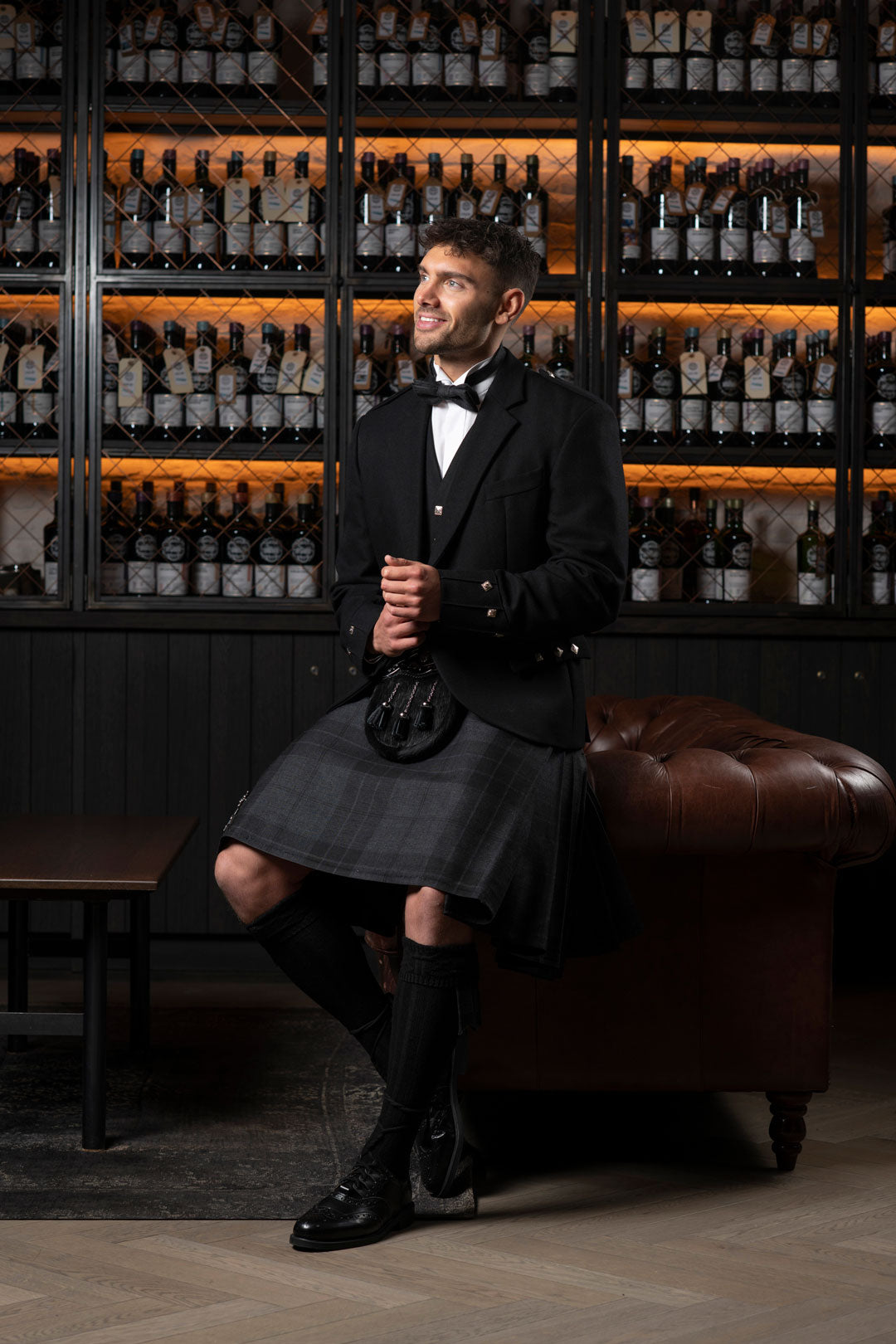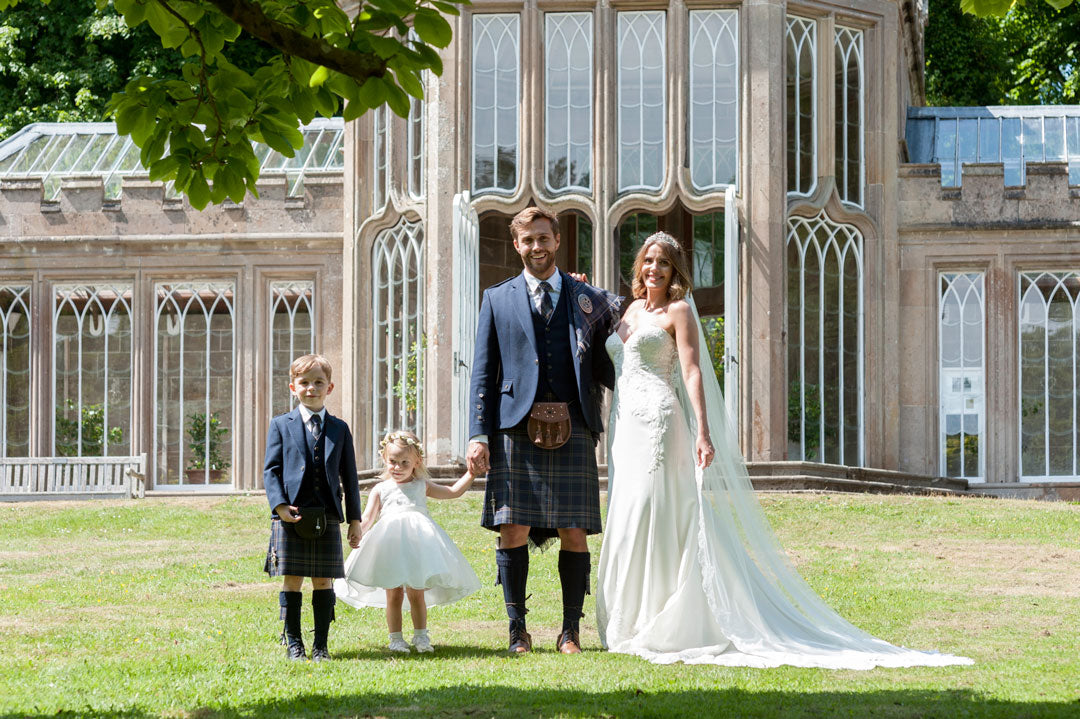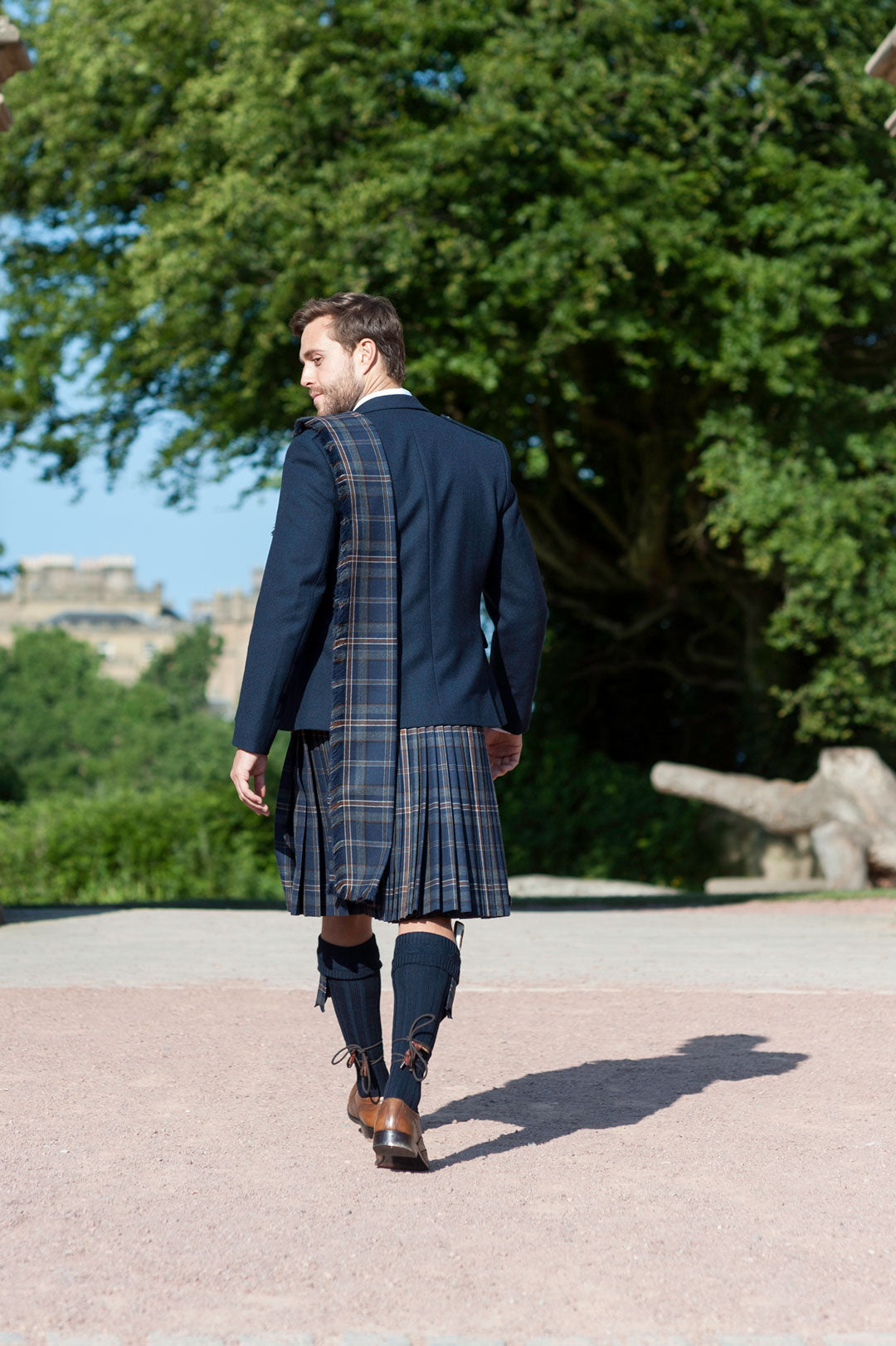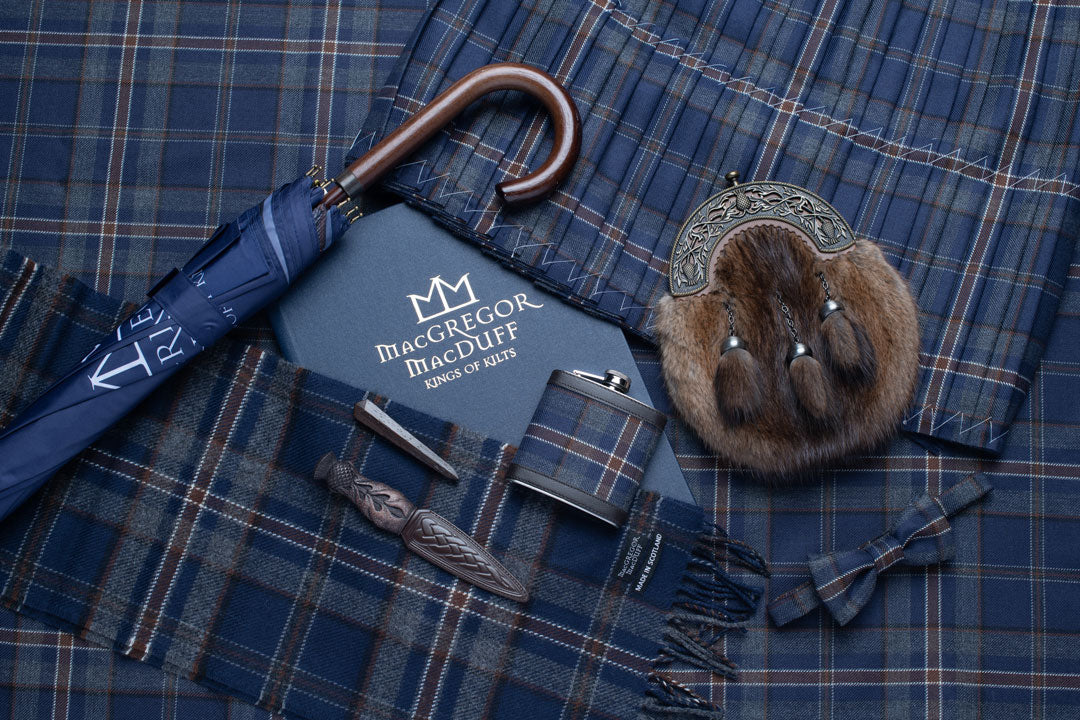Scotland is a place that is immersed in tradition. The evidence of deep-rooted customs can be easily found from Burns Suppers to ceilidh dances. These traditions serve as a direct link to Scotland's colourful past, which has become the source of national pride and is what draws visitors from around the world to experience. One day that arguably features more Scottish tradition than any other is a wedding. With most people wearing kilt outfits and the almost guaranteed sound of bagpipes, Scottish weddings have become not only a celebration of love but also a celebration of heritage. So what can you do to incorporate Scottish tradition into your wedding?
 How to add a touch of tartan to your wedding?
How to add a touch of tartan to your wedding?
Whether it’s on the groom or guests, tartan is rarely absent from a Scottish wedding. Tartan historically represents an individual clan or family and as a wedding is the joining of two families, tartan has almost poetic symbolism. The easiest way to have tartan feature in your wedding is by the groom and his groomsmen wearing kilt outfits. If the groom has a Scottish name, he could wear his clan tartan and his groomsmen could wear the bride's clan tartan. There are also universal tartans that have no clan connection that could be worn as a symbolic gesture to the union. The bride could also wear some tartan in the form of either a shawl or a piece of tartan ribbon in her hair or bouquet. Tartan material could also be used creatively in the centrepieces of the reception tables. Incorporating tartan into your special day is easy and can be a great addition to the décor, as well as a meaningful gesture to the families.
 What ancient Scottish rituals can I include in my ceremony?
What ancient Scottish rituals can I include in my ceremony?
If you are looking for ways to incorporate ancient Scottish wedding traditions into your big day, the best options are to include a handfasting and quaich ceremony. Handfasting ceremonies date back thousands of years and were a form of marriage contract. The couple's hands were bound together and vows of commitment were recited. Folklore states that this contract was valid for a year and a day, at which time the couple could decide to stay together or break the union. Today there is no legality to a handfasting ceremony but it is a brilliant way of incorporating a Scottish touch to your ceremony. Today, the material used for handfasting is usually tartan ribbons, one in the groom's clan tartan and one in the bride's. Similarly, a quaich ceremony is an ancient tradition that symbolises the bond of two people and the joining of their families. A quaich is essentially a two-handed cup, which is also referred to as a loving cup. Both the receiver and giver of the quaich must use two hands to hold it, symbolising trust for one another. During the ceremony, the quaich is usually filled with whisky, and a speech is recited about trust, togetherness, and love.
 Should you have bagpipes and a ceilidh at your wedding?
Should you have bagpipes and a ceilidh at your wedding?
 Can I wear a plaid to a wedding?
Can I wear a plaid to a wedding?
 Your wedding will be memorable, regardless of whether you decide to include any of these Scottish traditions. The most important part is you make it the way you have dreamt it, and if you’ve always dreamt of having a Scottish wedding, you won’t go wrong with a touch of tartan or a ceilidh dance or two.
Your wedding will be memorable, regardless of whether you decide to include any of these Scottish traditions. The most important part is you make it the way you have dreamt it, and if you’ve always dreamt of having a Scottish wedding, you won’t go wrong with a touch of tartan or a ceilidh dance or two.
